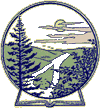For this week's blog we challenged our photographers to submit their favorite nature images, preferably those that tell a story. And the entries did not disappoint. Thank you all for your beautiful submissions and I look forward to seeing your migration shots for our next blog!
1. Chincoteague National Wildlife Refuge
Chincoteague, a resort island located along Virginia's eastern shore, is a gateway to the Chincoteague National Wildlife Refuge (NWR). The refuge, located on the Virginia end of Assateague Island, spans 14,000 acres with several different habitats including beach, dunes, saltwater flats, forests, shrubs and freshwater wetlands. The numerous species hosted in such a diverse ecosystem include a large array of wildlife, the most famous of which is the feral population of Chincoteague Ponies. Throughout the year you'll find several species of wading birds, nesting shorebirds, seabirds and a variety of other wildlife.
This image, photographed by Gina Vaughan, encapsulates much of the character and tranquility of the refuge. In the wanting sunlight, the beautifully rim lit ponies graze in the marsh while egrets flock to their roosting grounds.

2. Osprey
As with many bird species, the Osprey population suffered a dramatic decline in the mid-20th century, primarily due to the use of DDT as pesticide. Following the DDT ban the population has recovered and is considered a conservation success story. However, loss of habitat has kept this species as endangered or extirpated (locally extinct) in parts of the country, particularly inland regions. Ospreys naturally build their nests high in trees which offer open surroundings for easy approach. A very successful population recovery method has been construction of man-made platforms on utility poles or channel markers. Throughout the country you will see nests atop these platforms lining the road near bodies of water. As in this image photographed by Diana Meyn, this time of year, look very carefully and you might even see a head peeking up as the mother Osprey incubates her eggs.

3. Red-tailed Hawk
The Red-tailed Hawk is a ubiquitous bird throughout the US. It is so common that once, during an hour drive, I counted 18 of them perched in the trees along the roadway. This image photographed by Tiffany Merritt shows three classic identifiers of a Red-tailed Hawk in its most common plumage:
1) Its tail feathers display that namesake red.
2) The band of spots across its belly is specific to the red-tailed hawk
3) Red-tailed hawks are buteos, a species of hawks with broad wings that aid them in soaring.

4. Dewdrops
In our final image for this week, Gina Vaughan photographed this lovely scene of dewdrops on a thorn branch. Capturing the sunlight through the drops, she was able to produce a starburst effect on the edges. If you look even closer you'll see the landscape inverted and reflected in the tiny drops. Dewdrop photography is an art form in itself and I encourage you to get out and play with it. Watch the drops to see what creative reflections you might capture. And consider adding a starburst effect by narrowing your aperture. The higher the aperture number, the more pronounced the effect. If you get something interesting, we would love to see it!
Gina writes, "We had an icy morning, but as things warmed up we went outside and walked around the farm while I took photos. This one was the simplicity we often see Mother Nature give us." - Gina Vaughan

5. Summary of resource links within this article:
- Buteos
6. Next Up
Submissions are due May 15th at 11:59pm EDT for the next blog featuring springtime migration!
The last Spring Migration push is upon us! Hummingbirds are returning home to breed, warblers are flitting about the trees and filling the air with their beautiful song. Late season waterfowl is finally surfacing on our lakes and rivers. For this next blog we are giving you two weeks to get out and shoot. We’d love to see what migrants you find this spring. All springtime migrating species (birds, mammals or insects) photographed between late winter and early June are welcome. New images would be great, but submissions from any year will be considered. We can’t wait to feature your migration photos!
